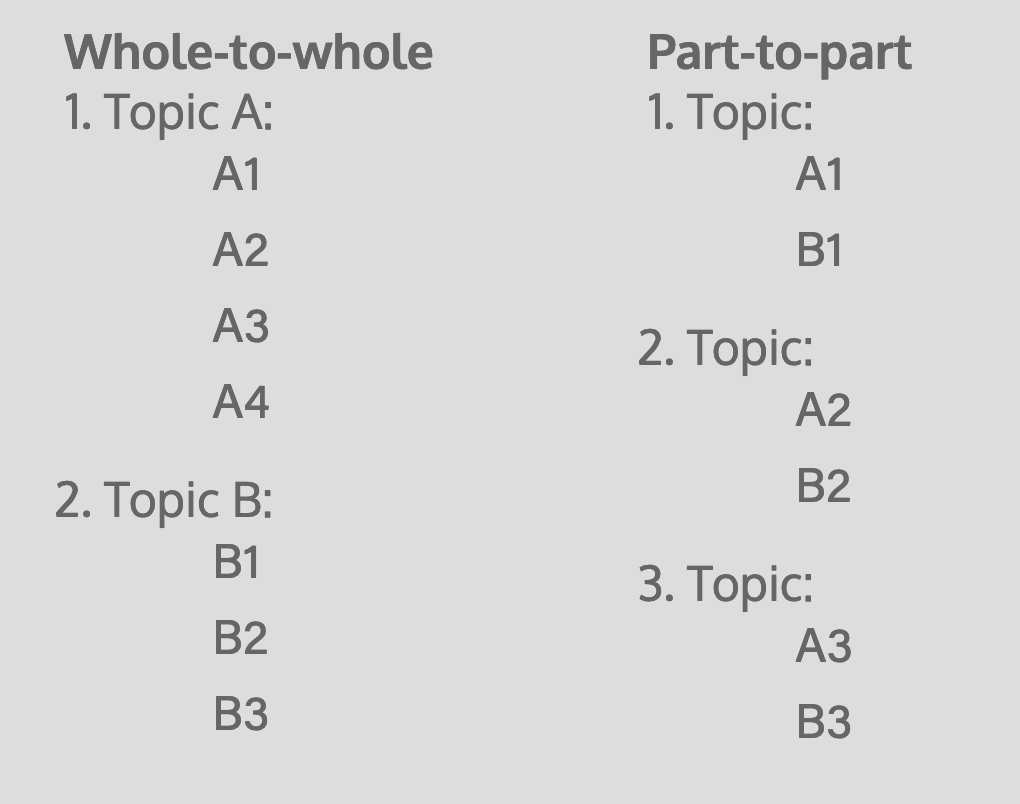Overview
This structure systematically explores relevant similarities and/or differences between two topics in order to accomplish a purpose for the hearer. In this sermon, the purpose of comparing/contrasting is crucial. While proverbial wisdom says that you cannot compare apples and oranges, the preacher responds that you most certainly can, depending upon what your purpose is. The sermon, thus, does more than simply inform hearers of similarities and/or differences. It uses that information for a purpose, and that purpose often makes a difference in their lives. For example, one could compare/contrast the teaching in an adult bible class with the teaching in the Sunday sermon for the purpose of encouraging hearers to attend both worship and bible class.
In presenting this information to the hearers, the preacher has a choice of two approaches. He can work whole-to-whole (i.e., offering all of the individual items of one topic before proceeding to a listing of the individual items of another topic: A1, A2, A3 and B1, B2). For example, the preacher may compare and contrast Mary and Martha or the Pharisee and the Publican. Or the preacher can work part-to-part (i.e., offering one item from each topic and then proceeding to the next item: A1/B1, A2/B2, A3/B3). In part to part, a larger theme will be present for the hearers that slowly unfolds through the comparison. For example, the preacher may articulate the theme of repentance by comparing and contrasting Peter and Judas or he may articulate the theme of preaching the kingdom of God by comparing and contrasting John the Baptizer and Jesus.

The choice of approach is often based upon the balance of information that you have and what you desire your hearers to remember. Whole-to-whole encourages them to remember the topics (e.g., Mary and Martha); part-to-part encourages them to remember the items that compose the topics (e.g., the stages of temptation found in both the fall of Eve and the fall of David into sin).
Examples
Chapel Sermon by Jeffrey Gibbs from Luke 3:1-20 on Wednesday, December 5, 2018.
